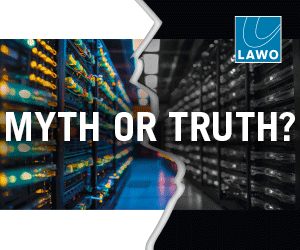Dubai firm Elcome tells SatellitePro ME about its plans to bring a new wave of connectivity and entertainment to those at sea.

Always-on connectivity and entertainment on demand, often taken for granted on land and air today, is still a luxury on ships at sea. However, with the launch of several small satellites and lower-Earth orbit constellations, always-on connectivity and broadband availability are looking more promising for the vessels of the future.
Dubai systems integrator Elcome, which will celebrate its 50th anniversary in 2019, is one of the first players in the market to aggressively pursue an entertainment and connectivity solution for the maritime industry.
?We are one of the few companies in the world that provide a full turnkey infrastructural and technology installation for any type of vessel, and connectivity is one element that we have been focusing on in the last eight or nine years, as it is becoming increasingly important,? remarks Jimmy Grewal, Executive Director at Elcome.
?Connectivity and crew welfare have become beneficial. If you can provide that connectivity and entertainment, it?s a huge attraction for crew to join a vessel,? he points out.

Grewal, a software engineering graduate who worked on developing Internet Explorer at Microsoft before he joined his father?s business at Elcome, says his job at the US tech giant helped him understand bandwidth consumption and some of the pain points around it.
With high demand in the market and the right leadership, engineering and strategic skills to address the requirement, Elcome decided to give connectivity its due attention. Today, the systems integrator is working closely with Global Eagle Entertainment, a major solutions provider in the aviation sector, to provide an enhanced entertainment experience to the maritime industry.
Global Eagle touts an entertainment solution called Ocean Prime TV, which is still quite nascent with just five channels in the bouquet and a high premium attached. Elcome hopes that together, the two companies will be able to develop a solution that includes a much bigger bouquet at a much lower price.
?We will have a substantial offering ready by 2020,? says Asneed Ameer, Deputy Manager at Elcome. The company has already been bundling connectivity packages on some of its clients? vessels and has seen an unprecedented escalation in demand.
?Around 10 years back, people only wanted standard voice call and email. Today, vessel owners want 4Mbps, 8Mbps or more. In fact, crews only want to join a vessel if they have TV or internet on board. We had started by giving some ships 120MB a month, which was huge then. We slowly moved that to 500MB. More recently, we provided a customer with 4GB but that soon became insufficient. Now, we are providing between 6GB and 8GB each month to crew members on some vessels,? explains Ameer.
However, he cautions that connectivity is not as straightforward at sea as on land. To ensure that crew usage does not interfere with connectivity for operations or third-party service providers, Elcome allocates connectivity to address three separate requirements.
?Our connectivity solutions are split into three ? high-priority network for corporate and operations; the second for crew; and the last as a third-party network for machine-to-machine communication. This way, we ensure that crew usage of data does not impact operations or thirdparty services. We monitor crew usage, analyse the data and share that with the owners so they know how to allocate bandwidth. We are constantly looking for solutions that don?t harm the network while trying to give people a solution that works for them as well,? explains Ameer.

But crew welfare is only one aspect of connectivity, Grewal adds. Others need to be addressed to ensure that the vessel can sail safely. Engine, propulsion and other electrical systems, for instance, are significant, and therefore all new vessels are designed and deeply integrated with sensors that have connectivity as a standard feature.
?We introduced this around two years ago,? he explains.
Since then, Elcome has fitted this solution into nine vessels, where third-party companies can connect to the machines.
?We keep this connectivity separate, and those who have access to it need to secure special permission from the authorised person. This is a new introduction to the market and we developed that, and it?s evolving because clients are increasingly concerned about security and redundancy,? Ameer chips in.
Likewise, navigation equipment, safety systems and other solutions benefit from having always-on connectivity, Grewal explains.
?Navigation, which we have been doing from day one, also benefits from always-on connectivity. We have been investing heavily in putting together solutions that help harvest data from ships that are meaningful for ship owners. For instance, we offer a solution that integrates weather and tide data and any safety warnings into the route planning. This enables the vessel to continuously adjust its route and speed, and optimise its operations based on the latest weather data. So securing that data, processing it in real time in the cloud and providing analytics back to the owners helps them have a better understanding of what is happening with their fleet so they can take steps to optimise the performance of that fleet. That is an ongoing development and something we are working on with our partners,? he explains.
Besides offering connectivity, solution providers have to ensure that it remains consistent and does not fail the team on the ship when they need it the most.
?We have the advantage of being able to provide consistent connectivity and the same bandwidth on all beams. That?s because we club four or five coverages together and work with different partners,? says Ameer.
Connectivity at sea, however, comes with a lot more challenges at present.
Connectivity and crew welfare have become beneficial. If you can provide that connectivity and entertainment, it?s a huge attraction for crew to join a vessel? Jimmy Grewal, Executive Director, Elcome
?The majority of data services come through satellite, so there is a much higher concentration of demand on satellite from major shipping and trading routes, but these are designed primarily to optimise coverage over land. Then adverse weather conditions can impact the performance of connectivity. Thirdly, with traditional satellites in geostationary orbits, there have always been latency issues,? explains Grewal.
Fortunately, prices are going down as ?big satellite providers are making huge investments in terms of re-purposing beams to cover dense maritime channels?, explains Grewal.
?Then there have been new satellite launches dedicated to addressing the needs of the maritime industry, and when more do this, it drives up supply and competition and eventually there has been a dramatic reduction in prices.?
In addition, with VSAT antennas becoming smaller and lighter, more vessels have benefited from always-on connectivity, he points out.
?Now, with the development of low-Earth orbit satellites, we expect to see a similar major change in terms of the amount of bandwidth available at a fixed price. With the reduction in the size of the antennas, the cost of the antennas will go down, and of course there will be a reduction in latency.
With the technology just becoming available to offer sophisticated connectivity on vessels, Grewal reckons ?this will be a time of major shift for the maritime industry? ? one that Elcome believes it is ready to handle.
?We peaked at the right time because in our industry right now, everyone wants high bandwidth connectivity on all of their vessels. Whether they can justify that today or not is irrelevant. But the demand is there, and with these new networks of satellites coming up in lower-Earth, one no longer has to worry that there is no beam in the sailing route between eastbound and west-bound ships in the Indian ocean and the Arabian Sea. The maritime industry will benefit the most from this.?
Grewal is quick to point out, however, that ?the business model of providing connectivity will change?.
Around 10 years back, people only wanted standard voice call and email. Now, we are providing between 6GB and 8GB each month … on some vessels? Asneed Ameer, Deputy Manager, Elcome
?All the equivalent will be, in order of magnitude, smaller and cheaper. The service will be cheaper, so we have to be able to scale accordingly. And so one of the big investments we are making now is ensuring we are ready to have 10 times the number of vessels and provide them the same level of support that we can offer the current fleet that we manage.?
He dismisses any scepticism about legacy equipment, stating that all existing equipment has a certain lifespan.
?The time it is going to take for these services to come fully online roughly coincides with the time of the remaining life of the larger antennas. It is also not yet clear how the weather will impact the LEO constellations in terms of the services they provide.?
He believes there will always be challenges but remains optimistic that the industry ?has always found solutions?.
?Customers have addressed this in the past by having multiple services on board. They may have L-band combined with Ku- or C-band or whatever is required. That?s our job. To understand their business and operational requirement, and try and kit them out with the right solution to fit their budget.?
With 60% of its workforce holding an engineering position at the company, and three-quarters having an engineering background, Elcome believes it has the relevant skills to develop new solutions. Additionally, it has partnered with the largest navigation and automation equipment players, who are the main drivers in terms of providing connectivity on board, from an operational point of view.
With its 50th year on the near horizon, Elcome is poised to address the connectivity shift in the maritime sector.










































































